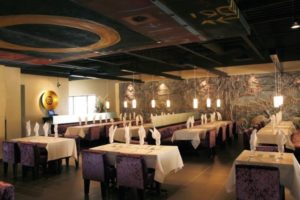November 10, 2017

Some upscale restaurants in Tehran are now charging an admission fee of $150. And the prices of the dishes aren’t given on the menu. But, no matter, the point is to demonstrate that the diner is a person of wealth and the tab is a minor concern.
The higher the price, the more customers are ready to spend, reports the daily Iran, which is owned by the government.
The people who frequent these ultra-expensive restaurants are branded as VIPs, the newspaper maintained, commenting sourly, “The only reason to count them as VIPs is the fact that they are super-rich and can easily afford high admission fees plus ordering dishes on the ‘priceless’ bills of fare.”
The price these patrons pay for a three-course meal rivals the monthly salary of an average white-collar office worker.
Majid, who frequents one of these top-notch restaurants, told Iran, “In these restaurants’ ambience, one feels serenity and tranquility. One feels different from others. It’s precisely that: one feels special.”
Majid says he and his fellow patrons pay no attention to the price of individual dishes after dolling out big bucks for the admission fee. “The waiters propose different dishes, and you pick your favorites, no matter the price. No prices are printed on the menus, whether it’s a starter, main course, salad or dessert.”
According to Majid, these restaurants have a regular clientele.
“When one steps into such a restaurant, they should know they are going to spend a lot of money. And I mean ‘a lot’ — something close to 20 million rials [more than $500] for three people. It is highly unconventional, I believe,” Majid said.
Most of these restaurants are located in the northern neighborhoods of the capital, Iran reported, adding, “To attract customers, they all have their own special methods and styles.”
“Most of the regular customers of these posh eateries prefer to have their meal in a calm atmosphere and a cozy ambience where nobody bothers them. They hate noise pollution and eyesores while eating their precious starter, pricey main course, and succulent dessert,” the newspaper said.
Children under the age of 10 are usually banned from such establishments since they are counted as sources of noise pollution.
The customers, a manager of one luxury restaurant told Iran, “love to spend money. Sometimes, the higher the price, the more they want to spend.”
Meanwhile, the same manager said, “The reason behind our high prices is the fact that we use first class and Grade A materials plus presenting a collection of good services and facilities.”
A salad featuring Persian caviar and avocado costs 4 million rials (just over $100).
Earlier, in 2011, a Tehran restaurant serving gold-flecked ice cream for almost $130 a scoop garnered international attention.
Thomas Erdbrink of The New York Times reported at the time, “Gold-flecked ice cream wasn’t part of the picture that Shiite Muslim clerics painted during the [1979] Iranian Revolution, when they promised to lift the poor by distributing the country’s vast oil income equally across society.
“But more than three decades later, record oil profits have brought in billions of dollars, and some people here are enjoying that decadent dessert. The trouble is, it’s just a small group of wealthy Iranians. Despite the promises of the revolution, many here say the gap between rich and poor has never seemed wider,” he commented.